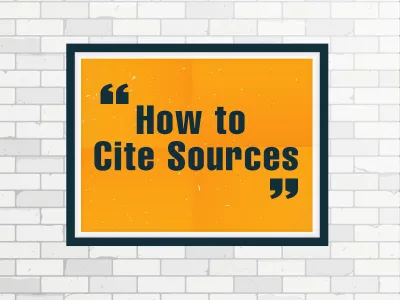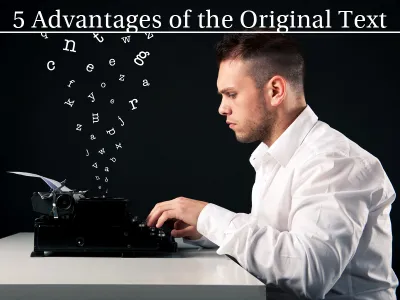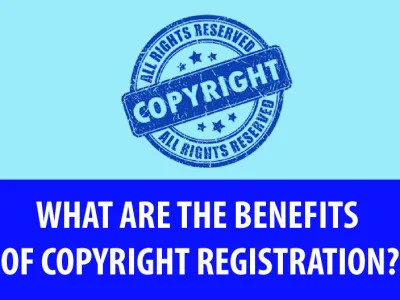
Top Ten Most Popular Types of Plagiarism
What is plagiarism?
Plagiarism is said to occur when someone takes the work or ideas from another person and uses or presents them as his or her own ideas. According to (Meriam Webster, 2016), plagiarism is stealing and passing off (the ideas or words of another) as one’s own or using the production of another without giving credit to the source. In order to detect plagiarism, an online plagiarism checker can be used to point out plagiarised content.
What types of plagiarism exist?
There are several types of plagiarism depending on how the person framed or modified the original content. In this article ten common types of plagiarism as outlined by (White Paper, 2012) are examined. A plagiarism detector can be used to identify most but not necessarily all of the below types of plagiarism.
![]() Clone. This involves presenting someone’s work word for word without making any changes to the original text and omitting citation of the source.
Clone. This involves presenting someone’s work word for word without making any changes to the original text and omitting citation of the source.
![]() Remix. A remixed plagiarism is realized when a writer paraphrases content from various sources to come up with a content that fits together impeccably.
Remix. A remixed plagiarism is realized when a writer paraphrases content from various sources to come up with a content that fits together impeccably.
![]() 404 Error. This form of plagiarism uses citations to sources that either don’t exist or are inaccurate. The name 404 Error is derived from the error message appearing when someone attempts to access an invalid or unavailable online resource.
404 Error. This form of plagiarism uses citations to sources that either don’t exist or are inaccurate. The name 404 Error is derived from the error message appearing when someone attempts to access an invalid or unavailable online resource.
![]() Retweet. In as much as the source is properly quoted, this type of plagiarism occurs when the writer depends too much on the original text wording and sentence construction.
Retweet. In as much as the source is properly quoted, this type of plagiarism occurs when the writer depends too much on the original text wording and sentence construction.
![]() Hybrid. This is when a writer embeds a well referenced source with content from other sources but does not cite all the text. Such text ends up crediting fewer sources than were actually used.
Hybrid. This is when a writer embeds a well referenced source with content from other sources but does not cite all the text. Such text ends up crediting fewer sources than were actually used.
![]() CTRL – C. The majority of the plagiarised text is exactly the same as the original text with minimal changes made. It is almost akin to cloning but here the writer only makes few changes to the original text.
CTRL – C. The majority of the plagiarised text is exactly the same as the original text with minimal changes made. It is almost akin to cloning but here the writer only makes few changes to the original text.
![]() Find – Replace. Another interesting approach to plagiarising is when only the key words and phrases of the original text are replaced with synonyms or closely related words.
Find – Replace. Another interesting approach to plagiarising is when only the key words and phrases of the original text are replaced with synonyms or closely related words.
![]() Recycle. This is arguably the most modest forms of plagiarism where the writer uses his or her own previously produced content and fails to properly provide citation. It is also known as self-plagiarism.
Recycle. This is arguably the most modest forms of plagiarism where the writer uses his or her own previously produced content and fails to properly provide citation. It is also known as self-plagiarism.
![]() Mashup. This is content obtained from an array of different sources and is presented without the appropriate citation.
Mashup. This is content obtained from an array of different sources and is presented without the appropriate citation.
![]() Aggregator. Although the writer includes proper citation, the entire work is mostly composed of citations and lacks original content.
Aggregator. Although the writer includes proper citation, the entire work is mostly composed of citations and lacks original content.
Examples of plagiarism
To illustrate different types of plagiarism, the following short story can be used to bring out the plagiarized content in its different form.
Original text
LAURA, HER CARROT, AND THE FLY
Laura, a three-year-old, was found with her mother holding a dead fly on her hand while eating a carrot with the other. Naively, she proudly showed her mother the fly saying “Look at the fly I have killed, Mom”. Her mother immediately rushed to wash Laura’s hand with antibacterial soap. Later on when Laura had finished eating her carrot, her mother decided to ask her how she had killed the fly. With an innocent smile, Laura replied “I hit it with my carrot”.
Plagiarized text (Clone)
LAURA, HER CARROT, AND THE FLY
Laura, a three-year-old, was found with her mother holding a dead fly on her hand while eating a carrot and holding it with the other. Naively, she proudly showed her mother the fly saying “Look at the fly I have killed, Mom”. Her mother immediately rushed to wash Laura’s hand with antibacterial soap. Later on when Laura had finished eating her carrot, her mother decided to ask her how she had killed the fly. With an innocent smile, Laura replied “I hit it with my carrot”.
Plagiarized text (Find – Replace)
LAURA, HER CARROT, AND THE FLY
Laura, a 3-year-old, was found with her mother holding a dead fly on her hand while munching a carrot and holding it with the other. Naively, she proudly showed her mother the fly saying “Look at the fly I have killed, Mom”. Her mother instantly rushed to wash Laura’s hand with antibacterial soap. Later on when Laura had finished munching her carrot, her mother decided to ask her how she had killed the fly. With an innocent smile, Laura replied “I hit it with my carrot”.
Plagiarized text (Retweet)
LAURA, HER CARROT, AND THE FLY
In the story of Laura, a three-year-old was found with her mother holding a lifeless fly on her hand while eating a carrot and holding it with the other. Naively, she proudly showed her mother the fly saying “Look at the fly I have killed, Mom”. Her mother immediately rushed to wash Laura’s hand with antibacterial soap. Later on when Laura had finished munching her carrot, her mother decided to ask her how she had killed the fly. With an innocent smile, Laura replied “I hit it with my carrot”.
(Source of story)
References
Meriam Webster. (2016). Plagiarizing. Retrieved from merriam-webster.com: https://www.merriam-webster.com/dictionary/plagiarizing
White Paper. (2012). The plagiarism spectrum. Retrieved December 12, 2016, from ed.ac.uk: http://www.ed.ac.uk/files/atoms/files/10-types-of-plagiarism.pdf



